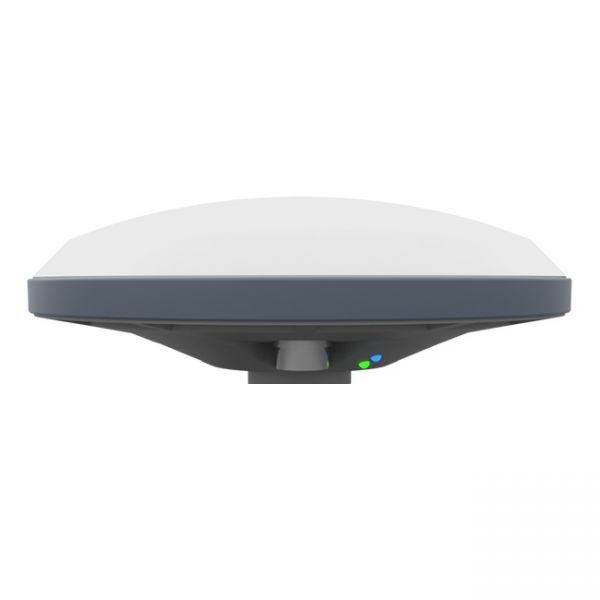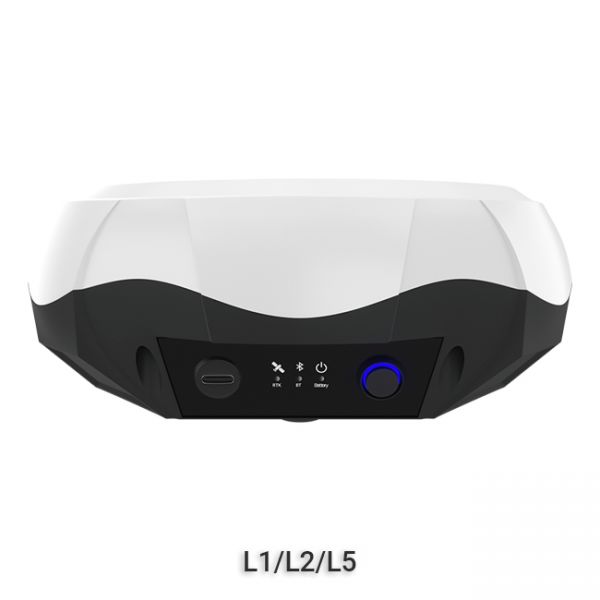PPP Galileo HAS Technology: Pros and Cons
15.07.2024The PPP technology allows for receiving free satellite corrections directly from the European satellite system. It involves additional data transmission channels on the e6b frequency from the GALILEO satellite system. Let’s take a closer look at the GALILEO HAS satellite correction technology, which is available on all continents and provides an improvement in the accuracy of absolute coordinates up to 20 cm. We will also compare it with RTK and Smooth Mode technologies.
How PPP GALILEO HAS Works
When the GNSS receiver is turned on, it performs an initial phase of searching and tracking satellite signals according to the saved almanac. The GNSS receiver’s almanac is a set of data containing information about the orbital parameters of all satellites in the GNSS system. After performing the necessary calculations and receiving the minimum data on the Galileo e6b frequency, the receiver switches to the initialization mode "PPP ini". This can be observed when the receiver tracks 30 satellites, and upon changing the status to PPP INI, the number of satellites drops to 10-15. This indicates that not all satellite systems support data exchange with Galileo satellites on e6b frequencies. Currently, there is compatibility with Galileo and GPS satellite systems. After completing the initialization, a fixed solution PPP FIXED is achieved. This status indicates successful location calculations, and the performed work will be saved with the maximum possible accuracy for this technology.
Pros of PPP Galileo HAS
- Accuracy: In Ukraine, accuracy is at the level of 30 cm without using paid corrections. For Western European countries, the average accuracy is less than 20 cm.
- Internet Not Required: The technology does not require an internet connection, making it convenient for remote areas.
- No Base Station Required: The absence of the need for base stations reduces costs and simplifies the use of the technology.
Cons of PPP Galileo HAS
- Usage Limitations: The GALILEO HAS technology is only available in open areas and in good satellite signal reception conditions.
- Long Initialization Time: It takes up to 20 minutes of waiting to obtain PPP FIXED status. Our tests show an average time of 7-15 minutes, but it often depends on weather conditions, time, and location.
- Long Re-acquisition Time: This primarily depends on reception conditions. If you leave the area of confident PPP FIXED reception and the receiver status switches to PPP ini, you need to return to the nearest open area and wait for a fixed solution. Our tests have shown that re-acquisition time is not different from initial initialization time. Re-acquisition can occur faster or slower due to weather conditions or overall satellite signal reception conditions. The higher the receiver is placed and farther from sources of physical and electromagnetic interference, the faster the initialization will be.
- Temporal Availability: Currently, GALILEO HAS is available 90% of the time, which means there are several intervals per day when the technology is unavailable, with a total unavailability time of up to 2.5 hours per day.
Where to Use PPP GALILEO HAS
- On Water: The technology can be used on lakes, rivers, seas, oceans. For better reception, the antenna should be placed on a high mast. It is convenient for fishing and finding coordinates on water surfaces.
- On Land: Application is possible in flat desert areas and extensive agricultural fields.
- In Urban Areas: Possible use on open areas, parking lots near large shopping centers, construction sites, sports grounds. The technology may be unavailable near dense buildings and under trees.
- In the air: The technology can be used on unmanned aerial vehicles, hang gliders, and other aerial means. This provides precise positioning for navigation and aerial mapping.
Comparison of PPP Galileo HAS, RTK, and Smooth Mode Technologies
| Technology | RTK | PPP | Smooth Mode |
|---|---|---|---|
| Accuracy | RTK technology provides absolute coordinate accuracy up to 1 cm. | Positioning accuracy 20-30 cm (in Ukraine), <20 cm in Western Europe. |
Relative positioning accuracy 20-40 cm. Tractor guidance: 15 cm of pass-to-pass accuracy. |
| Corrections | To use RTK technology, GNSS corrections are needed, which can be obtained from a single base station or a network of base stations. | GNSS corrections are not required. | GNSS corrections are not required. |
| Internet | Stable internet access is needed to receive GNSS corrections. | Internet is not required. | Internet is not required. |
| Availability | The technology is available 99% of the time. | The technology is currently available 90% of the time. | The technology is available 100% of the time. |
| Dependence | Only satellites synchronized with those tracked by the Base Station are used. The technology is available within the RTK network coverage area and the mobile Internet coverage area. Availability of special satellites are not required. | The technology is available with special satellites. Only Galileo (e6b) and GPS satellites are used. | All available satellites and satellite systems are used. |
| First Initialization Time |
On receivers with support for L1/L2 and L1/L2/L5 frequencies, approximately 25-30 seconds. |
Ready within 7-15 minutes. | Ready for operation within 1-2 minutes. |
| Re-acquisition Time | RTK FIXED takes only 3-5 seconds. |
Re-acquisition of PPP FIXED takes 7-15 minutes. |
Ready for operation within <30 seconds. |
We are interested in your opinion: What accuracy do you currently use? Are you satisfied with it? Do you see potential for using PPP technology in your work?
The updated version of the GNSS receiver GM SMART now supports Precise Point Positioning (PPP) technology from the Galileo HAS satellite system. This next-generation receiver is compatible with any navigation software, providing high accuracy and reliable positioning. GM SMART supports RTK mode on L1/L2/L5 frequencies, allowing for real-time corrections to achieve centimeter-level accuracy.
GNSS RTK receiver GM PRO L is a multi-frequency (L1, L2, L5) 965-channel receiver with an antenna that operates simultaneously with GPS, GLONASS, GALILEO, BeiDou, QZSS, IRNSS satellite systems and accepts corrections in the RTCM 3.X.X format. This receiver is designed to work with any software. Designed for professional use in surveying, agriculture, forestry and other industries where high accuracy is important.




